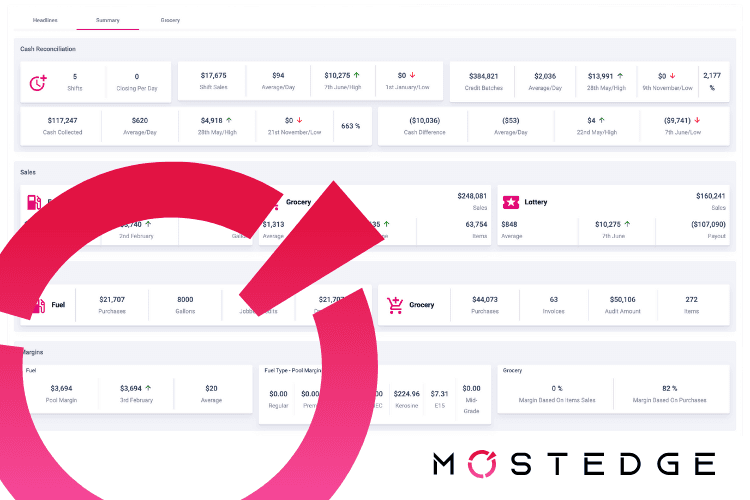Preventing Employee Theft in Gas Stations: Tips & Solutions

Understanding Employee Theft in Gas Stations: Types, Prevention, and Solutions
Employee theft remains a serious issue in the gas station and convenience store sector, leading to substantial profit losses each year. The National Association for Shoplifting Prevention estimates that retailers lose up to $50 billion annually due to theft, with employee theft making up a large part of that loss. Gas station owners encounter unique challenges in combatting this issue, with internal theft potentially involving anything from cash skimming to lottery manipulation and inventory loss.
Below, we examine the different types of employee theft, methods to identify warning signs, and practical ways to prevent these incidents. These insights aim to equip gas station owners and managers with the knowledge needed to safeguard their business and profits.
1. Types of Employee Theft in Gas Stations
Recognizing the different ways that employee theft can occur is the first step to addressing it effectively. Here are some of the most common forms of theft in the industry:
- Cash Skimming: Cash skimming is one of the most frequent types of theft. Employees may pocket a small amount from cash transactions, particularly if sales go unrecorded or transactions are voided after the payment has been received.
- Inventory Theft: Fuel, alcohol, and tobacco are high-value items commonly stolen by employees. Theft can range from “leakage”, where employees take items for personal use, to more organized schemes involving stolen stock intended for resale.
- Fuel Discounts or “Sweethearting”: Employees sometimes offer discounted or free fuel to friends or family by not ringing up the sale fully, or they might simply bypass the POS system. This practice significantly reduces revenue and can be difficult to detect without fuel sales tracking.
- Voided Transactions and “Phantom” Sales: Employees might complete a sale and void it afterward to pocket the cash. This creates “phantom sales” that look legitimate on paper but leave no trace after the fact, often going unnoticed without close inspection of transaction records.
- Coupon Fraud: Some employees misuse store promotions, using coupons without customer authorization or fraudulently redeeming them for personal gain. Since many promotions are designed to increase sales, misuse directly impacts the store’s intended profit margin.
- Lottery Theft: Gas stations that sell lottery tickets are especially vulnerable to this form of theft. Employees may avoid ringing up lottery sales to either pocket the money or falsely report sales as unsold to claim winnings. They might also manipulate the lottery inventory to take unsold tickets home, only paying for them if they win.
2. Recognizing Warning Signs of Employee Theft
Employee theft can be challenging to detect, but there are certain indicators that suggest suspicious activity:
- Frequent Shortages: Recurring cash or inventory shortages, particularly when associated with the same employee’s shifts, can be a red flag for theft.
- Defensive or Overly Eager Behavior: Employees who become overly defensive when questioned about discrepancies, or those who insist on working with minimal oversight, may be trying to conceal dishonesty.
- High Number of Voided or Canceled Transactions: If an employee consistently processes more voids or refunds than their peers, it might be worth investigating whether these are legitimate. Keeping records of who processes these transactions can help pinpoint any patters.
- Sudden Lifestyle Changes: While not always indicative of theft, unexplained changes in an employee’s financial status or lifestyle could signal they are gaining income from unauthorized sources.
- Fuel Sales Discrepancies: Discrepancies between the pump sales and cash register records may indicate fuel theft or unauthorized discounts.
- Irregular Lottery Activity: An increase in unsold tickets, discrepancies in lottery inventory, or unusually high payouts on lottery tickets sold by one employee could indicate lottery theft.
3. Prevention Tactics: Building a Theft-Resistant Operation
Preventing employee theft requires a multi-pronged approach that includes policy setting, training, and effective use of technology. Here’s how to start:
- Inventory and Cash Management Systems: Automated systems that track inventory and cash flow are critical, especially for high-theft items like tobacco and lottery tickets. Tracking stock counts and integrating POS with back office management software, like mercury|One, allows owners to spot issues faster.
- Regular Audits: Schedule regular audits of cash, inventory, and fuel records. Unannounced audits, in particular, discourage theft and demonstrate to employees that the business is vigilant about monitoring.
- Enhanced Security Surveillance: Surveillance cameras are essential for monitoring key areas such as cash registers, lottery displays, and storage areas. Integrating your surveillance system with the industry’s only transaction monitoring service from MostEdge gives real-time insights into any irregular activities.
- Transaction Monitoring: Using a transaction monitoring service to analyze sales data can help pinpoint discrepancies. MostEdge’s monitoring solutions offers in-depth analytics, making it easier to identify patterns of fraudulent behavior across transactions.
- Restricted Access: Limit access to high-theft items, including fuel and lottery tickets. Used coded access for certain POS functions, like returns, and maintain a strict log of employees who handle these areas.

4. Fostering a Transparent and Honest Work Culture
Encouraging a culture of integrity and openness among employees is one of the most effective ways to prevent theft. Consider these steps to create a positive work environment:
- Clear Anti-Theft Policies: Clearly communicate the business’s stance on theft and its consequences. This transparency often discourages employees from engaging in dishonest behavior.
- Reward Systems for Honesty: Recognize and reward employees who exemplify honesty and integrity. Incentives and acknowledgement for good performance foster loyalty, reducing the likelihood of theft.
- Encourage Reporting: Create a system that allows employees to report suspicious activity anonymously if necessary. A confidential outlet reassures employees that they can report issues without fear of retaliation.
5. Leveraging Technology to Minimize Employee Theft
Adopting the right technology can reduce employee theft and give owners greater control over store operations. Here are some key tech tools:
- Advanced POS Systems: POS Systems that track voids, refunds, and ticket sales help managers and owners detect unusual patterns in real time. MostEdge’s solutions allow store owners to customize tracking and receive alerts for potentially fraudulent activities, including voids, refunds, and lottery transactions.
- Integrated Security with Transaction Tracking: Linking video surveillance with transaction records provides visual verification of any suspicious transactions, including lottery and fuel sales. This integration can both deter and reveal theft patterns and provide clear evidence if theft is suspected.
- Virtual Store Manager Solutions: Virtual management tools, such as store operation service, allow owners to monitor multiple access of their stores remotely, including lottery sales, inventory, and employee attendance. These tools are especially beneficial for owners managing multiple locations.
Taking a Proactive Approach
Employee theft in gas stations can have a significant impact on profitability, but by understanding the types of theft that are common, knowing how to identify warning signs, and implementing robust preventative measures, gas station owners can reduce these losses.
Ready to secure your profits? Schedule a free store evaluation today to learn more about how MostEdge can help you protect your business.



